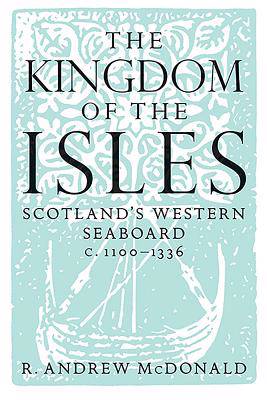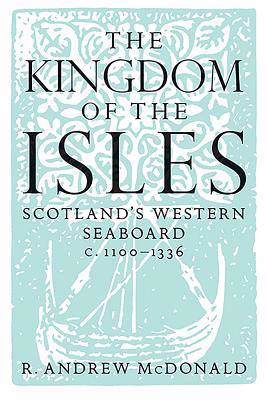
Door een staking bij bpost kan je online bestelling op dit moment iets langer onderweg zijn dan voorzien. Dringend iets nodig? Onze winkels ontvangen jou met open armen!
- Afhalen na 1 uur in een winkel met voorraad
- Gratis thuislevering in België vanaf € 30
- Ruim aanbod met 7 miljoen producten
Door een staking bij bpost kan je online bestelling op dit moment iets langer onderweg zijn dan voorzien. Dringend iets nodig? Onze winkels ontvangen jou met open armen!
- Afhalen na 1 uur in een winkel met voorraad
- Gratis thuislevering in België vanaf € 30
- Ruim aanbod met 7 miljoen producten
Zoeken
€ 40,45
+ 80 punten
Omschrijving
This study explores the history of the western seaboard of Scotland (the Hebrides, Argyll and the Isle of Man) in a formative but often neglected era: the central middle ages, from the mightly Somerled to his descendant John MacDonald, the first Lord of the Isles (c. 1336).
Drawing on a variety of sources, this very readable narrative deals with three major and closely interrelated themes: first, the existence of the Isles and coastal mainland as a kingdom from c.1100 to 1266; second, the rulers of the region, Somerled and his descendants, the MacDougalls, MacDonalds and MacRuaris; and third, the often complex relations among the Isles, Scotland, Norway and England. A fully rounded history emerges, which transcends national viewpoints.
While political history predominates, the changing nature of society in the isles is emphasised throughout, and separate chapters address the church and monasticism as well as the monuments - the castles, monasteries, churches and chapels that form an enduring legacy.
Drawing on a variety of sources, this very readable narrative deals with three major and closely interrelated themes: first, the existence of the Isles and coastal mainland as a kingdom from c.1100 to 1266; second, the rulers of the region, Somerled and his descendants, the MacDougalls, MacDonalds and MacRuaris; and third, the often complex relations among the Isles, Scotland, Norway and England. A fully rounded history emerges, which transcends national viewpoints.
While political history predominates, the changing nature of society in the isles is emphasised throughout, and separate chapters address the church and monasticism as well as the monuments - the castles, monasteries, churches and chapels that form an enduring legacy.
Specificaties
Betrokkenen
- Auteur(s):
- Uitgeverij:
Inhoud
- Aantal bladzijden:
- 280
- Taal:
- Engels
- Reeks:
Eigenschappen
- Productcode (EAN):
- 9781904607793
- Verschijningsdatum:
- 1/10/2008
- Uitvoering:
- Paperback
- Formaat:
- Trade paperback (VS)
- Afmetingen:
- 155 mm x 231 mm
- Gewicht:
- 453 g

Alleen bij Standaard Boekhandel
+ 80 punten op je klantenkaart van Standaard Boekhandel
Beoordelingen
We publiceren alleen reviews die voldoen aan de voorwaarden voor reviews. Bekijk onze voorwaarden voor reviews.











